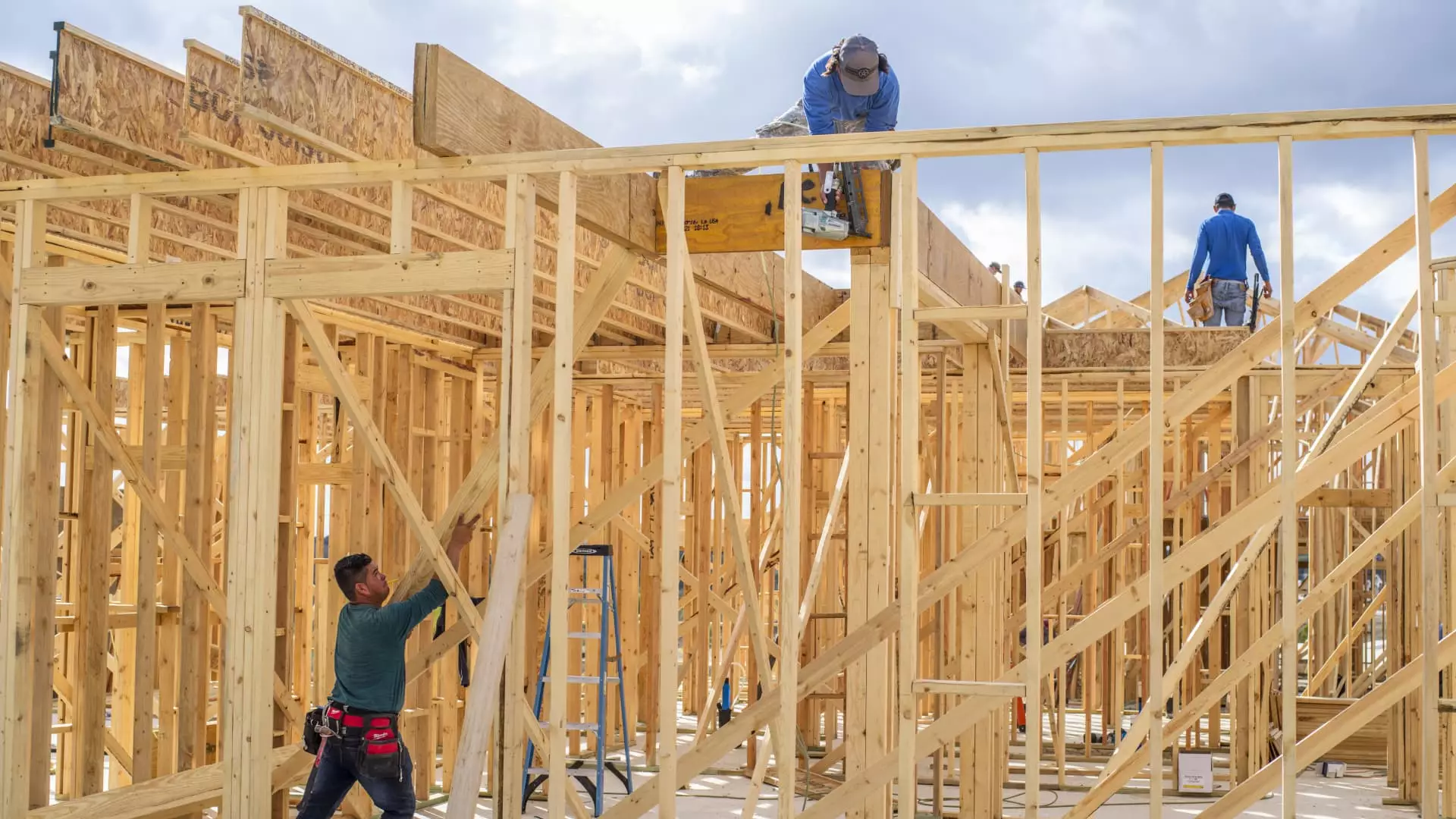The current climate for single-family homebuilders in the United States presents a complex tapestry of challenges and uncertainties. February marked a significant downturn in builder sentiment, as indicated by the National Association of Home Builders’ Housing Market Index (HMI). This drop to a five-month low reflects a myriad of contributing factors, primarily surrounding economic pressures and policy ambiguities that are reshaping the housing landscape.
In February, the HMI experienced a notable decline of five points, resulting in a concerning score of 42. Sentiment scores below the 50-mark signify a negative outlook among homebuilders. This drop from a previous rating of 48 last February points not only to a shift in sentiment but also to waning confidence among builders regarding market conditions. As noted by Carl Harris, the NAHB Chairman and a veteran builder from Wichita, there’s a palpable tension between hopes for favorable regulatory reforms and the harsh realities of escalating costs and uncertain policies.
The recent slump in sentiment indicates that builders are wrestling with the implications of tariffs that threaten to increase their operational costs significantly. Approximately one-third of softwood lumber and appliances in construction is sourced from international markets, raising concerns over how this could impact projects’ financial feasibility.
The HMI is composed of various elements, each depicting specific facets of the housing market’s health. In February, three core components reflected this declining confidence: current sales conditions fell by four points to 46, buyer traffic saw a decrease of three points to 29, and sales expectations for the following six months witnessed a dramatic plunge of 13 points to a mere 46. Notably, the plummet in builder expectations signifies the lowest levels since December 2023 and underscores a potentially cooling housing market amid these challenging conditions.
Elevated mortgage rates are also putting a damper on prospective buyers’ enthusiasm. Recent averages for the 30-year fixed mortgage have hovered above 7%, significantly escalating from previous rates that languished around 6%. The compounded effect of these high rates bolstered by climbing home prices further deteriorates affordability for many buyers.
The anticipated tariffs introduced under former President Donald Trump and the delays surrounding their implementation have left builders in a state of limbo. Despite a postponement in the tariffs slated for Canadian and Mexican imports, builders remain on edge regarding future costs. Robert Dietz, NAHB’s chief economist, points out the critical nature of tariffs in relation to essential building materials, heightening fears that these economic barriers will ultimately erode profit margins.
Despite a seasonally strong interest period approaching, marked by the spring housing market, lower builder sentiment hints at a potential reduction in housing supply. Builders are beginning to echo concerns regarding a pullback in buyer demand, a trend which has gained traction in recent earnings reports as they disclose their fiscal realities.
As industry leaders like Ryan Marshall, CEO of PulteGroup, highlight, even measures like Federal Reserve interest rate cuts have not abated the affordability crisis facing homebuyers. The persistent high mortgage interest rates further deter buyer engagement and color homebuilder optimism.
Interestingly, a decline in the share of builders lowering prices was observed — down to 26% in February, from 30% in January, marking the lowest level of price reductions since May 2024. The reduction in sales incentives points to a grim realization — buyers are increasingly priced out of the market, and existing incentives are proving less effective as they fail to entice a dwindling pool of buyers.
The cooling sentiment among homebuilders signals crucial challenges ahead, notably in affordability, operational costs exacerbated by tariffs, and fluctuating buyer demand. As the housing market stands on the cusp of a critical season, the outcomes of these factors will likely shape the industry in the months to come. Homebuilders must navigate these uncertainties with cautious strategies, recognizing that sustaining buyer interest in a high-cost environment is becoming more elusive.


Leave a Reply